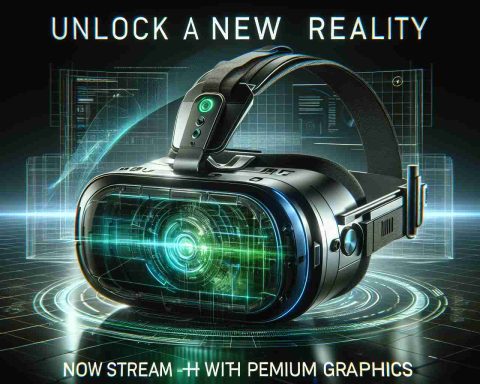AMD is preparing to introduce a new era in its GPU lineup with the upcoming Radeon RX 8000 series, powered by the Navi 48 and Navi 44 architectures. Recent reports indicate that the company will unveil at least four distinct GPU SKUs, signaling a strategic pivot towards the mainstream gaming audience. This decision comes after AMD’s previous high-end offerings failed to gain significant market traction.
The new RDNA 4 architecture will include two main chips, Navi 48 and Navi 44, each expected to produce two SKUs. These chips will utilize GDDR6 memory capable of impressive speeds reaching up to 20 Gbps, potentially positioning AMD more favorably in a competitive landscape dominated by other manufacturers.
The anticipated SKUs consist of Navi 48 models R24D-E8 and R24D-E6, along with Navi 44’s R25D-P8 and R25D-P4. While specific details regarding their specifications remain undisclosed, it’s clear that AMD is gearing up for an official reveal at CES 2025, with a possible launch in the following months.
As AMD aims to capture a larger share of the mainstream market, it faces stiff competition from Intel’s Arc Battlemage GPUs and NVIDIA’s upcoming RTX 50 series. The challenge will be to effectively engage this broader audience while navigating the rapidly evolving graphics card landscape. The success of the Radeon RX 8000 series could redefine AMD’s standing in the industry.
Facts Relevant to AMD’s Shift to Mainstream GPUs
1. Market Landscape: AMD’s shift to mainstream GPUs reflects a broader trend in the GPU market where many gamers are looking for affordable yet high-performance graphics solutions, especially amid economic fluctuations that have affected consumer spending.
2. Competition with NVIDIA and Intel: NVIDIA and Intel have solidified their positions in the gaming GPU market, making AMD’s move crucial to remain competitive. NVIDIA’s dominance, particularly with its RTX 40 series, poses a significant challenge, as does Intel’s entry into the GPU space with its Arc graphics cards.
3. Market Share Goals: AMD is likely looking to increase its market share, which has been lagging behind NVIDIA in the high-performance and mainstream segments. A successful Radeon RX 8000 series could attract gamers who prioritize cost-effectiveness.
4. Technological Innovations: The RDNA 4 architecture may introduce new features such as improved ray tracing capabilities, AI acceleration, and better power efficiency, which could enhance performance in real-world gaming scenarios.
5. Consumer Trends: As gaming increasingly shifts towards high-resolution and high-refresh-rate displays, AMD’s offerings will need to compete effectively in these areas to appeal to mainstream gamers who demand quality graphics while maintaining reasonable pricing.
Key Questions and Answers
1. What are the expected prices for the Radeon RX 8000 series?
– While prices have not been officially announced, an expectation exists for AMD to position these cards competitively against NVIDIA’s offerings, likely keeping them in the $200–$600 range to attract mainstream gamers.
2. How will the RDNA 4 architecture differ from RDNA 3?
– RDNA 4 is expected to offer improvements in efficiency and performance per watt compared to RDNA 3, as well as enhancements in memory bandwidth and support for newer technologies such as PCIe 5.0.
3. When is the official announcement and release date for the Radeon RX 8000 series?
– The series is anticipated to be officially unveiled at CES 2025, with a likely launch in early 2025.
Key Challenges and Controversies
– Supply Chain Issues: Like many tech companies, AMD faces potential challenges with semiconductor supply chains which could impact production timelines and availability.
– Performance Expectations: There are high expectations from consumers regarding the performance of the RX 8000 series, particularly against Intel’s and NVIDIA’s upcoming products, which could lead to disappointment if those expectations are not met.
– Environmental Considerations: There is growing scrutiny regarding the environmental impact of GPUs, and AMD will need to address sustainability in its product development and marketing.
Advantages and Disadvantages of AMD’s Strategy
Advantages:
– Broader Appeal: By focusing on mainstream GPUs, AMD can cater to a larger audience, including budget-conscious gamers.
– Competitive Pricing: Historically, AMD has provided better price-to-performance ratios than NVIDIA, which could attract consumers during economic downturns.
– Technological Equity: If AMD successfully enhances performance with the new architecture, it may close the gap with NVIDIA’s current advantages in high-performance gaming.
Disadvantages:
– Stiff Competition: The presence of established competitors could hinder AMD’s market penetration despite the appeal of mainstream products.
– Innovation Pressure: Constantly needing to innovate to keep pace with NVIDIA and Intel can lead to increased R&D costs.
– Brand Perception: AMD’s previous high-end failures may lead to skepticism among consumers about their new offerings, requiring effective marketing strategies to regain trust.
Suggested Related Links
AMD
NVIDIA
Intel
Tom’s Hardware
TechRadar


















